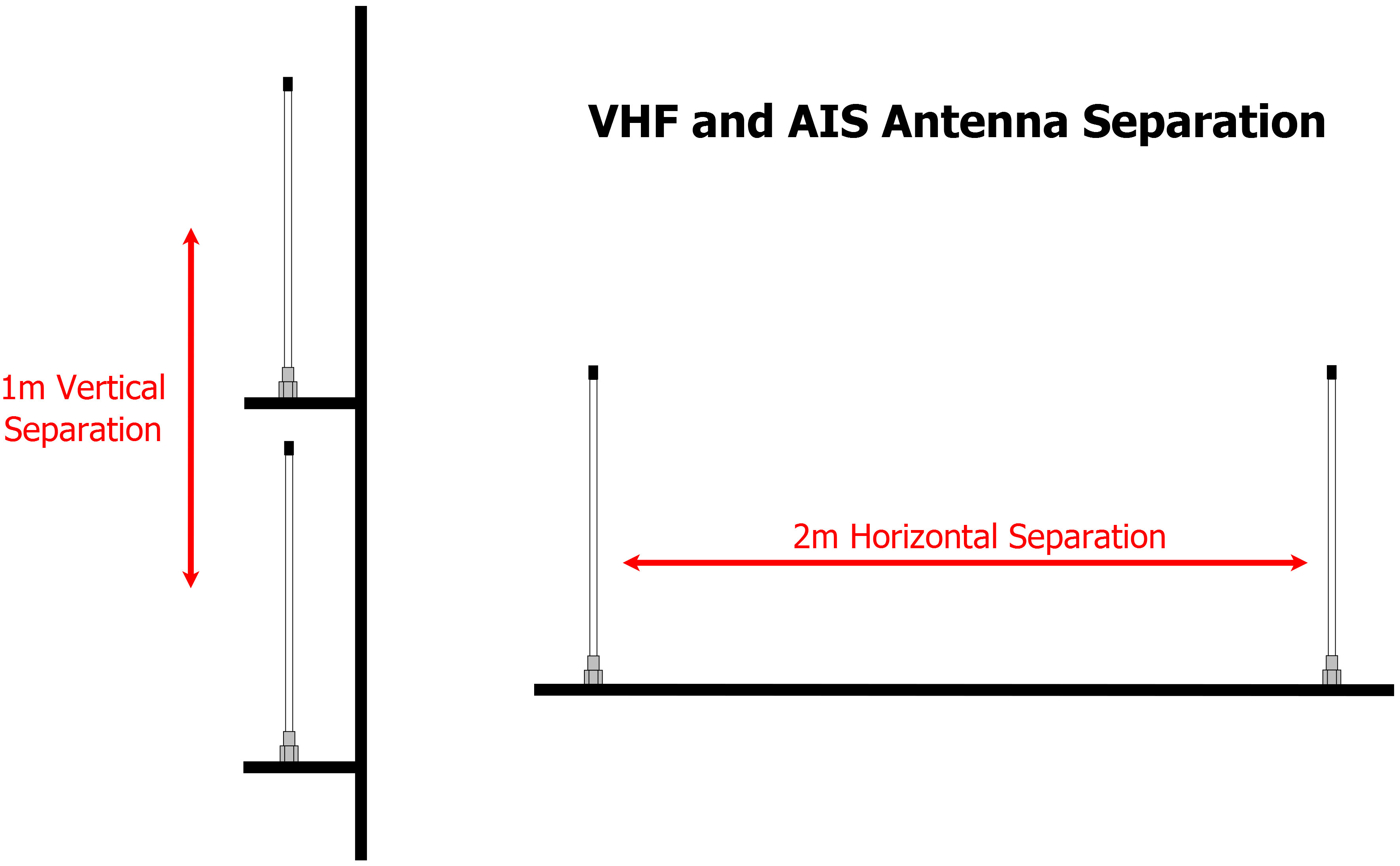The AIS system works on two channels in the VHF frequency range and in order to receive or transmit AIS information it is necessary for the AIS unit to be connected to a VHF antenna. One option is to fit a VHF splitter such as our SPL2000, which allows both the VHF radio and the AIS to use the boat’s main VHF antenna. The other option is to fit a second VHF antenna which is then just connected to the AIS.
Any VHF antenna can be used, although some antennas are “AIS tuned” to get maximum gain on the two AIS channels and also have a BNC type connector fitted (common on AIS units), rather than the traditional PL259 VHF connector.
If you decide to fit an additional VHF antenna for the AIS, you want to mount it as high as possible but you should be aware that it cannot be mounted right next to the existing VHF antenna and a certain amount of separation must be maintained to avoid the 25 watts of transmit power from your VHF radio going straight in to the AIS receiver circuitry, potentially damaging it. The diagram below shows the recommended minimum separation of the antennas.








The reality of the situation is that unless you have a ketch, if you have mounted the aerials on the mast, it is impossible to have 2m horizontal separation. Some people put them on the stern rail but they are very vulnerable there.
I agree that on a lot of sail boats mounting a second antenna is problematic and that is why we see some installations where antennas are mounted too close to each other, which triggered this post. A lot of boats do mount the second antenna on the stern rail and this works OK. It is a compromise and will result in a reduction in reception range, plus the point you make about vulnerability, but many customers accept this. For anyone who wants maximum performance, then a splitter like our SPL2000 is the only option.
So, following your post, I have rewired my AIS into an antenna on the mizzen mast, leaving the main VHF on the main mast. The second antenna on the main mast can be a spare.
Are there any concerns when mounting a second VHF on the spreader? Would we see the VHF power being transmitted into the mast?
As long as the antenna is not directly next to the mast and is mounted on the spreader, say a foot or two from the mast it should be fine.
Paul (Digital Yacht)
Wonderful article. very informative and helpful. I found so many new things and information while reading your post and you have replied. I just want to give a thumbs up for your great article.
keep writing such a noteworthy article.
Thanks,
Adme Smith